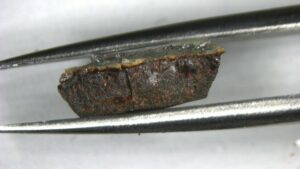The presence of nitrous oxide in the atmospheres of Earth-like exoplanets could be a signature of the presence of extraterrestrial life – according to a study done by researchers in the US led by Edward Schwieterman at the University of California, Riverside.
Using advanced computer models to support their proposal, the team believes that its work could offer important insights for exoplanet studies by current and future observatories – including the James Webb Space Telescope (JWST).
Astronomers know of more than 5000 exoplanets – which are planets that orbit stars other than the Sun – and that number keeps growing. As telescopes improve, astronomers are getting better at determining the compositions of exoplanet atmospheres, and these measurements play an important role in the search for extraterrestrial life. This is done by making spectroscopic measurements on starlight that has passed through exoplanet atmospheres.
In search of life
We have never seen life on another planet, so we do not know exactly how it would affect exoplanet atmospheres. Instead, astrobiologists identify chemicals in Earth’s atmosphere that are associated with the presence of life and search for these “biosignatures”.
This is where nitrous oxide (also known as laughing gas) comes in. While it is not especially common in Earth’s atmosphere today, Schwieterman and colleagues suggest that the gas could have been abundant in previous eras of Earth’s history.

Toxic gases in habitable zone could hinder emergence of alien life
Nitrous oxide is produced by some living organisms on Earth, so it is possible that it could present in the atmospheres of some exoplanets that harbour life. Here on Earth, however, there are natural processes that keep atmospheric nitrous oxide levels very low. However, on other planets an abundance of nitrous oxide could result from low levels of the metal catalysts and biological enzymes that break down the compound. Another possibility is that the stellar radiation received by some exoplanets is not as efficient as sunlight at destroying nitrous oxide. Indeed, nitrous oxide levels in such situations could be high enough to be observed by telescopes like the JWST.
Schwieterman’s team explored this idea by developing a biogeochemical model that quantifies the likely abundance of nitrous oxide in the atmospheres of Earth-like exoplanets orbiting main sequence stars. By coupling their model to photochemical and spectral models, the researchers also calculated that nitrous oxide could build up to detectable levels within a range of atmospheric conditions. This could include the TRAPPIST-1 system, where as many as four planets appear to orbit within the habitable zone of their cold red dwarf host star.
Although nitrous oxide can also be produced by non-biological sources, such as lightning strikes, the team showed that the amounts of gas produced would be orders of magnitude lower than that produced by alien ecosystems. Based on their results, Schwieterman and colleagues hope that the JWST, along with other telescopes actively hunting for signs of life in exoplanetary atmospheres, will add nitrous oxide to the list of viable biosignatures – potentially bringing the discovery of extraterrestrial life a step closer.
The research is described in The Astrophysical Journal.












